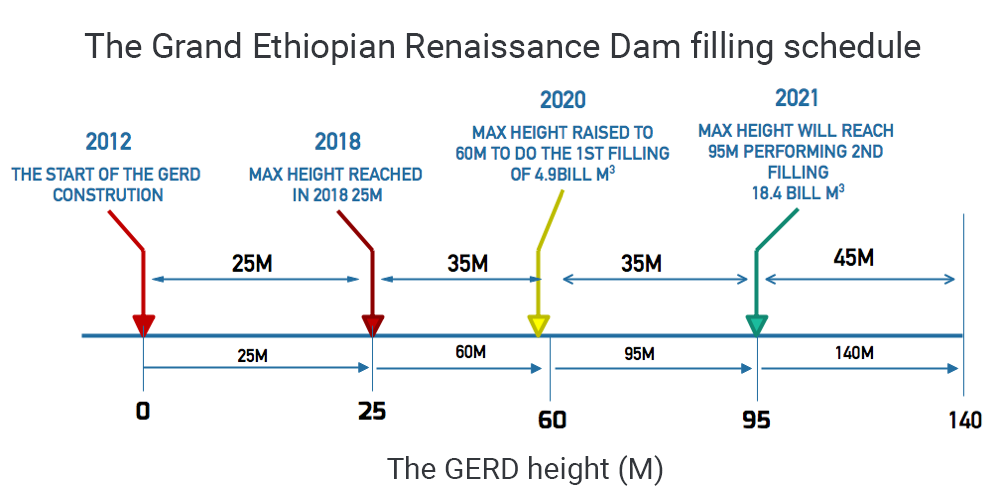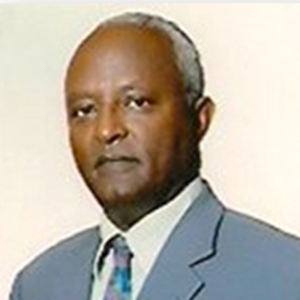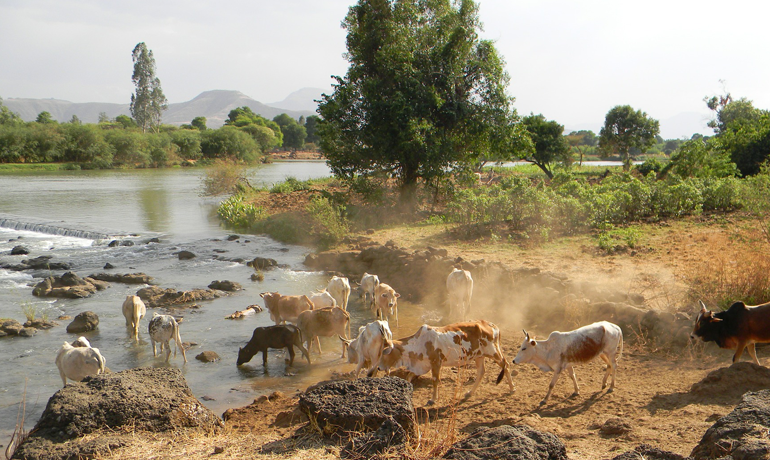Recently the Ethiopian Foreign Minister, H.E. Gedu Andargatchew delivered a brief about the Grand Ethiopian Renaissance Dam (GERD), a hydroelectric dam construction on the Blue Nile River. His audience were resident ambassadors of European countries and Americas. The brief was an update on the latest technical, political and diplomatic developments surrounding the hydroelectric dam. It was evident, however, that something was not moving in the right direction.
The Ethiopian Foreign Minister informed the ambassadors that Ethiopia pursued the principle of equitable and reasonable utilization of the Nile River and affirmed that GERD would not cause any significant harm to downstream countries. His Excellency Mr. Andargachew also enumerated a number of additional benefits, including the ability to regulate the flow of water, prevent flooding, reduce evaporation, and provide regional power interconnection that could facilitate economic integration.
Further, he reaffirmed Ethiopia’s commitment to follow through the plan to commence the first initial filling phase in July 2020. Ethiopia plans to retain 4.9 billion cubic meters of water during this coming rainy season (July and August) as part of first-phase filling and the volume would be enough to test two turbines in mid-2021. Ethiopia is not obliged to inform Egypt as it was provided in a 2015 the Declaration of Principles agreement signed between Sudan, Egypt and Ethiopia. Mr. Andargachew stated his disappointment for not reaching an agreement with the Egyptians and their continued objection to Ethiopia’s initial filling activities.
Following a Sudanese initiative to resume negotiations to reach a comprehensive agreement that would determine the rules of filling and operating the GERD, technical negotiation sessions among Egypt, Ethiopia, and Sudan have occurred daily in the past few weeks. Each country was represented by its respective irrigation ministers.Three observers representing the United States, the European Union and South Africa also attended. Unfortunately, as the result of Egyptian demand, based on their intent to maintain a colonial monopoly of the Nile waters, it was not possible to reach an agreement and the negotiations were terminated.
The time has come for Ethiopia, as the owner of the dam, to assert her right. Ethiopia reserves the right to amend the rules occasionally, provided it informs the downstream countries, namely Egypt and Sudan, of any urgent situation necessitating amendment of the operation policies of the dam, according to the declaration. This gives Ethiopia privileges to proceed with storage of water in the reservoir and run operations without signing any binding agreements.
Ethiopians should not be held back by the 1959 Nile Waters Agreement between the Sudan and Egypt that never included Ethiopia, the source supplier of 86% of the water. Egypt and the Sudan have to find a common ground to use this critical resource that can make a major difference to the livelihood of 110 million Ethiopians.
We strongly support our leaders who are in the trenches fighting for reasonable and equitable utilization of the Nile water resources which will enable Ethiopia to provide electricity to a nation that has less than 45% electrification and provide clean drinking water to more than 60% of the population. Power generated from the GERD will have a significant impact in accelerating growth, building export businesses, boosting capacity and creating employment to millions of youth finally bring stability and peace not just to Ethiopia but also to the Horn of Africa.
Ethiopia now has to proceed with its timeline. We control our destiny at home by getting the GERD to be ready for filling by July 2020 finally generating the 1st 750MW.

Source: EEPCo, Power sector development, 2014; Parson Bancroft, Ethiopian Power Infrastructure, 2014.
All the talk by the Egyptian government and the shuttle diplomacy of the Egyptian Minister of Foreign Affairs Sameh Shoukry has not and will not bear fruit in this short time.
When the GERD project progresses as planned, it will be the savior for the 110 million inhabitants of Ethiopia. It will make an impact to significantly change their lives for the better by providing energy to light homes, power industries, and supplying drinkable clean water helping them in the process avoid water borne disease. If progress is delayed or slowed down, there will be dire consequences to Ethiopia.
The Ethiopian rainy season will be upon us within the next month, and Ethiopia has pushed to swiftly commence on the filling of the dam at a height of 60 meter by collecting about 4.9 billion m3 of water from Blue Nile (about 10% of the estimated annual flow). This storage will enable Ethiopia to activate two power generators that will produce 750MW from the twin Francis turbines (350MW each). This milestone will set a baseline for other turbine generators that will be installed in the coming few years to produce a massive energy of 15,760GWh that will have a major impact on the future socio economic development of the country.
A high level comparison of Ethiopia and Egypt current power generation and utilization and the future projection clearly shows Ethiopia is at great disadvantage and needs to catch up very quickly to meet the demands of her growing population.
Today Egypt’s electricity generation is set at 55,000MW. This number could end up with an enormous surplus of 74.400MW by 2035, new research by African Energy finds. The country is able to supply 100% of electrification and 100% fresh drinking water to its entire nation. The main power source is derived from Natural gas, CGGT and gas that accounts 90% of the total supply with less than 5% from Aswan High dam (AHD).
On the other hand, Ethiopia’s power generation in 2020 is about 4,300MW and is expected to reach more than 10,000MW by the completion of the filling of the GERD coming soon. It’s highest generated power is expected to come from the GERD, therefore it has a paramount significance for the government to accelerate the completion of the dam in a short time. The electrification and clean water drinking availability for its citizens is close to 45% compared to Egypt’s 100%. That is really why the government is making its first priority to implement this hydro project to alleviate the pain and suffering of its citizens.
- There was a study done by Parson Bancroft, an American company that performed the Distributed load forecast of the Ethiopian power generation, transmission and distribution system in 2014.Using the numbers from this study and EEP generated technical documents, we shall examine the type of consumers and industries that require power to advance the economic growth of Ethiopia. Referencing the detailed studies made by EEP and other international organizations on the load forecast of the annual energy consumption and peak power demands, we can clearly see the importance of accelerating the completion of the construction and filling the water as planned by the government of Ethiopia.
- Finally, we shall enumerate that the urgency of adding power to the Ethiopian power grid is as essential and important precedence to meet the demand of power to its people needs and power consumption by the industries.
Ethiopia’s economic growth over the last decade on an average was above 8%, when that is interpreted to a demand of electricity every year, we need to multiply by 20% to 25% of the available power of the grid. Over the last three years EEP has not constructed power generation plants to augment the deficit of close to 2700MW. The rationing and blackout of powers that are witnessed in Ethiopia and in the countryside this year is proof of the lack of unavailable power to meet the demand.
There are a number of irrigation projects in the country located at various places that require a diesel generator to pump water from underground using submersible pumps to provide drinking water and irrigations. If we take as an example a planned water irrigation project in the Afar Region using 520 wells with a full load capacity, it requires 400KW of diesel generator power per well. The cost of fuel to power up these pumps will cost $9,766,874,400 per year. This is a burden for the customer costing close to $10 billion bir and the foreign currency earmarked by the government of Ethiopia to buy fuel in US dollars. The Ethiopian government in this example can save close to $10 billion birr allowing it to not use its foreign currency reserve for fueling but instead it can use it for other vital programs.
Extending the filling period of the GERD to more than 10 years will create an extreme hardship to Ethiopians who have been suffering, and continue to suffer currently, because of lack of electrification that impacts vital needs such as sufficient access to health, security, and education.
A delay in the filling timeline will bring a sizable economic hardship to emerging businesses that are expanding throughout the region of Ethiopia. The delay could result in tens of billions of dollars if we count the direct loss of revenue from electricity sales for five to ten years and the indirect cost of reduced production in manufacturing and other key industries that would continue to suffer from electricity shortages including residential, service and commercial entities. Energy produced from GERD will be close to 15,760 GWH, with a price marking of 7 cents per KW hour, then annual revenue generated from this transaction will amount close to US$1.103bn at full capacity.
Unlike the 1980 and 1990 The Aswan High Dam played a key role in supplying 50% of the distributed power of Egypt. Today Egypt gets its power generation sources from fossil fuel amounting close to 90% and only 4.5% comes from the High Aswan Dam (HAD). Therefore, the significance of the HAD at the moment is more symbolic than becoming a wedge for the negotiation among Ethiopia, Sudan and Egypt. In addition, Egypt has 4 major groundwater aquifers that can supply enough water for irrigation especially the Nubia Sandstone Aquifer and currently used exploiting desalination plants throughout its country.
Finally, the GERD gives Ethiopia access to electricity that will be an important driver of poverty reduction, economic growth, and industrial production in energy-hungry Ethiopia. The people of Ethiopia are anxiously waiting for H.E. Prime Minister, Dr. Abiy Ahmed to inaugurate the GERD which has become a symbol of hope, prosperity and unity.

Eng. Behailu Assefa
Eng. Behailu Assefa is a Managing Director of ASC Engineering Service and Terra Global Energy Developers engaged in the design and implementation of 400MW wind power project in the Debra Berhan region of Ethiopia. He can be reached at bassefa[at]asceng.net.

